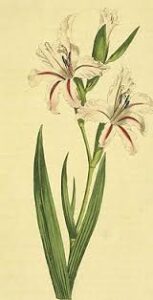
Orchids, with their delicate beauty and remarkable diversity, are integral components of natural ecosystems, particularly in forested regions around the world. In this article, we explore the significance of conserving and regenerating natural forest areas for the preservation of orchid species and biodiversity.
**1. Orchids as Indicator Species**
Orchids are often regarded as indicator species, meaning their presence or absence can provide valuable insights into the health and ecological balance of a particular habitat. As epiphytes or terrestrial plants, orchids rely on specific environmental conditions, such as humidity, temperature, and light levels, making them sensitive indicators of habitat quality and ecosystem stability. By monitoring orchid populations, researchers and conservationists can assess the overall health of forest ecosystems and identify areas in need of protection and restoration.
**2. Biodiversity Hotspots**
Natural forest areas are biodiversity hotspots that support a wide range of plant and animal species, including many orchid taxa. Orchids thrive in diverse forest habitats, from tropical rainforests and cloud forests to temperate woodlands and montane forests. These ecosystems provide orchids with essential resources, such as host trees for epiphytic species, mycorrhizal fungi for nutrient uptake, and pollinators for reproductive success. By conserving natural forest areas, we safeguard the rich biodiversity of orchids and other flora and fauna that depend on these habitats for survival.
**3. Habitat Loss and Fragmentation**
Despite their ecological importance, natural forest areas are under threat from deforestation, habitat degradation, and land conversion for agriculture, logging, and urban development. Habitat loss and fragmentation disrupt ecological processes, fragmenting orchid populations, and reducing genetic diversity. Many orchid species are highly specialized and have narrow habitat requirements, making them particularly vulnerable to habitat destruction and climate change. Conserving and restoring natural forest areas is crucial for maintaining habitat connectivity and preserving orchid diversity over the long term.
**4. Conservation Strategies**
Conservation efforts aimed at protecting and restoring natural forest areas play a vital role in safeguarding orchid species and their habitats. Conservation strategies may include establishing protected areas, such as national parks and wildlife reserves, implementing sustainable land management practices, and promoting community-based conservation initiatives. Habitat restoration projects, such as reforestation and agroforestry, can help rehabilitate degraded landscapes and create corridors for wildlife movement, facilitating the dispersal of orchid seeds and enhancing habitat connectivity.
**5. Indigenous Knowledge and Traditional Practices**
Indigenous communities and local people often possess valuable knowledge and traditional practices related to the conservation and sustainable use of forest resources, including orchids. By engaging with indigenous communities and incorporating traditional ecological knowledge into conservation planning, we can enhance the effectiveness and sustainability of conservation efforts. Collaborative approaches that respect local customs, traditions, and land tenure systems are essential for promoting community participation and achieving conservation goals.
**6. Global Collaboration and Partnerships**
Addressing the challenges of conserving and regenerating natural forest areas requires coordinated action and collaboration at local, national, and international levels. Governments, non-governmental organizations (NGOs), research institutions, and private sector stakeholders can work together to develop and implement conservation policies, mobilize resources, and support community-led initiatives. International cooperation and partnerships, such as the Convention on Biological Diversity (CBD) and the United Nations Framework Convention on Climate Change (UNFCCC), are essential for promoting cross-border conservation efforts and addressing global environmental challenges.
**Conclusion**
In conclusion, conserving and regenerating natural forest areas are essential for the preservation of orchids and biodiversity worldwide. By protecting intact forest ecosystems, restoring degraded landscapes, and engaging with local communities, we can safeguard orchid species and their habitats for future generations. Together, we can work towards achieving sustainable forest management practices that balance the needs of people and nature, ensuring the continued existence of orchids and the myriad of life forms that depend on healthy forest ecosystems.










